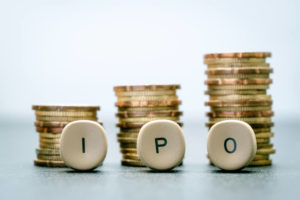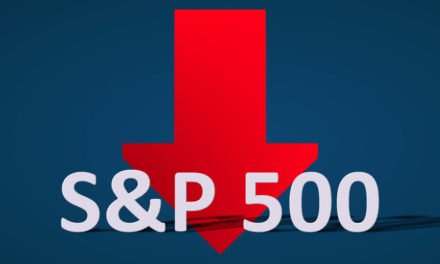So there’s this hot private company that’s generating a lot of buzz by going public and you want to know how to invest in an IPO.
That’s fair. There’s been a lot of private companies brought to the public market lately and they can present an interesting investment opportunity — whether you are new to investing or a seasoned veteran.
IPOs are exciting and get a lot of attention, but it’s important, as an investor, to understand how an IPO works.
It’s not like just buying a stock or an exchange-traded fund (ETF), and those differences can cost you money if you don’t know what they are.
We’ve compiled a list of what you need to know when looking at how to invest in an IPO.
What is an IPO?
An IPO is a common term used for initial public offering.
 The simplest definition of an IPO is when a privately owned company offers shares to be sold to the public. It’s also referred to as taking a company public.
The simplest definition of an IPO is when a privately owned company offers shares to be sold to the public. It’s also referred to as taking a company public.
While there’s a ton of focus on high-tech IPOs like CrowdStrike Holdings Inc. (Nasdaq: CRWD) and Lyft Inc. (Nasdaq: LYFT), any private company can go public.
The way it works is a private company decides to go public, so then it has to take the necessary steps to file with one of the stock exchanges to do so.
The company’s management then usually goes on a tour to pitch to potential investors. Remember, at the end of the day, the biggest reason for a company to go public is to raise money, and they need investors to buy the publicly offered shares to do that.
Because companies seeking an IPO have to open their books and be fully transparent, it’s easier for investors to get behind a company — because they’ve already seen the numbers (and, we’ll get into that in a bit).
There Are Drawbacks to an IPO
Just as there are good things for a company going public, there are those not-so-good things as well.
Drawbacks to an IPO is that is costs the company money to register. You have various filing and legal fees, plus the regulatory fees once the company goes public.
Then you have shareholders.
While they are the backbone of a company making money, the fact a company has them means the primary owners are no longer the only ones involved in making company decisions.
Oh, and once a company goes public, everything is public. Because a public company files quarterly reports, annual reports and any transactional updates with the government, all of that becomes public information.
Launching an IPO
You might think launching an IPO is easy — it isn’t. It takes a ton of legwork and time to just get things in order for the launch.
The biggest step in the process is for the company to find its underwriter. That is perhaps the most important person involved in the process.
The underwriter works for an investment bank and advises the company on its IPO. According to the Corporate Finance Institute, here are the criteria used to select an investment bank and underwriter:
- Reputation
- The quality of research
- Industry expertise
- Distribution i.e. if the investment bank can provide the issued securities to more institutional investors or to more individual investors.
- Prior relationship with the investment bank
The importance of the underwriter is highlighted once the IPO is approved by the Securities and Exchange Commission. That’s when the company and underwriter decide on the IPO price — the price shares will be sold to you, the investor.
Then company owners go on their road show to attempt to entice potential investors into forking over their money once the IPO is ready.
There are a lot of other steps in the process but for the purpose of this article, we’ll jump right into how to invest in an IPO.
How to Invest in an IPO
1. Find an IPO
The first step to invest in an IPO is actually finding one.
There will be a lot of media hype around big, high-profile IPOs but remember, any company can launch an IPO and the ones getting the most media attention may not be ones you want to get into.
In order to find companies seeking an IPO, you can search the Securities and Exchange Commission’s database of S-1 filings.
Once you find a company, you have to register with a brokerage firm in order to invest. This ensures that as an investor, you know immediately when a company plans to issue shares.
Companies will let brokerage firms know when they plan to launch an IPO because companies look to make money on the launch and they can’t do that without investors.
Make sure you know what, if any, qualifications a brokerage firm has in order for you to invest in an IPO. You may need a certain amount of money in your brokerage account or have a certain number of transactions through the firm to qualify.
So the first step in how to invest in an IPO is finding one and getting set to invest.
2. Do the Homework
If we’ve said it once, we’ve said it a thousand times … do your homework.
That goes for any kind of investment, whether you are looking to buy stocks, bonds, ETFs, real estate — anything.
With IPOs it might be even more important because you need to learn as much as you can about a company that’s been privately run.
Make sure to scour the internet for any information you can find. Check financial websites (like Money and Markets) to find any relevant news about a company you are considering investing in.
Finally, when you are researching, understand that not everything is equal. Just because one company’s IPO did well doesn’t mean a similar company in the same sector will have the same outcome.
Like with any investment, doing your homework is essential when you look at how to invest in an IPO.
3. Know the Brokers and Read the Info
There are a lot of investment houses and brokers. Some are well-established and others, well, not so much.
 But when talking about IPOs it’s important to know the broker bringing the IPO to market. A more experienced broker has done it before and knows how the game is played. A smaller one may not fully understand all that’s involved and their lack of experience could impact the offering or opening price (see the price explanation below).
But when talking about IPOs it’s important to know the broker bringing the IPO to market. A more experienced broker has done it before and knows how the game is played. A smaller one may not fully understand all that’s involved and their lack of experience could impact the offering or opening price (see the price explanation below).
That doesn’t mean larger brokers only bring winning IPOs to market, or that smaller firms haven’t had success. But consider a larger broker can pick and choose an IPO where a smaller one is likely taking what they can get until they are established.
On that note, another key point is any company seeking an IPO will be to put out a prospectus. This is an outline of challenges and benefits, but if you read it closely you may find some information that causes you to turn away.
For example, if a company plans to use the money raised in an IPO to repay loans, that is a bad sign. It means the company can’t afford to pay loans without raising money. Investing in new markets or expanding on research is a better use of money raised.
Make sure you know the brokers bringing a company’s IPO to market and read the company prospectus when you look at how to invest in an IPO.
4. Understand IPO Pricing
You’ve done your due diligence and you are ready for that opening bell so you can buy into an IPO.
One thing to consider is what’s called the offering price — the price shares are offered to initial investors — and the opening price — the price shares are traded on the open market. There is a difference.
Note: Most individual investors won’t have access to shares at the offering price. Underwriters traditionally reserve those shares for institutional clients.
The offering price is set by the underwriter and is usually determined by just how much money the company wants to raise. Demand from investors will also play a role in the offering price.
The opening price is set strictly by supply and demand. Traditionally, if the demand for a stock outweighs the supply on the day shares hit the open market, the opening price is higher. If not, the price is lower.
Just remember to temper your expectations when you look at how to invest in an IPO.
5. It’s OK to Wait
Legally, any investor who bought the stock before it went public cannot sell that stock for a specific time period. That can range from three months to two years, and it’s referred to as the lock-up period.
 Usually, after that time, there is a bit more stability in the company and the share price may be a lot lower than when the IPO came out. Conversely, it could be the opposite, so there is a risk.
Usually, after that time, there is a bit more stability in the company and the share price may be a lot lower than when the IPO came out. Conversely, it could be the opposite, so there is a risk.
However, one thing to keep in mind is if those inside investors keep their stock even after the lock-up period, it could be a good sign that the company is sustainable. On the other hand, if inside investors start offloading stock the day the lock-up period ends, that could be a bad sign.
Remember, if it’s a good company, it will survive market fluctuations and be just as good after the lock-up as it was on Day 1.
Exercise caution if you are considering jumping into an IPO. They can volatile and because shares aren’t readily available to everyone, if you are offered it means there were a lot of investors ahead of you that likely passed.
That doesn’t mean it’s a bad investment — it just may be better later.
So waiting is something to consider when you look at how to invest in an IPO.
Investing in an IPO Isn’t Hard, But Be Careful
Just like investing in anything, it’s not hard to do. But you need to understand what you are getting into and the risks of what are doing.
IPOs can be tricky and, above all, volatile.
That doesn’t mean you shouldn’t invest in them, but rather you should know the process of an IPO and understand what you are getting into before you do it.
Doing your homework, understanding the players and pricing and knowing that it’s OK to wait are just some of the important things to understand when you look at how to invest in an IPO.
So there’s your comprehensive guide to investing in IPOs. It’s important for you, as a potential IPO investor, to have as much information as possible before deciding to take that leap.
RELATED:
Luongo: Oil Dumps and Pumps to Support Saudi Aramco IPO
Anyone Who Believes WeWork Is Worth $10B is ‘Lying, Stupid or Both’
Is Beyond Meat Overcooked? Shares Plummet After New Valuation
Ride-Hailing Duopoly? Uber, Lyft Losses Keep Competitors at Bay
IPO Tax a Boon for California; Blowing Surplus May Be Too Easy





